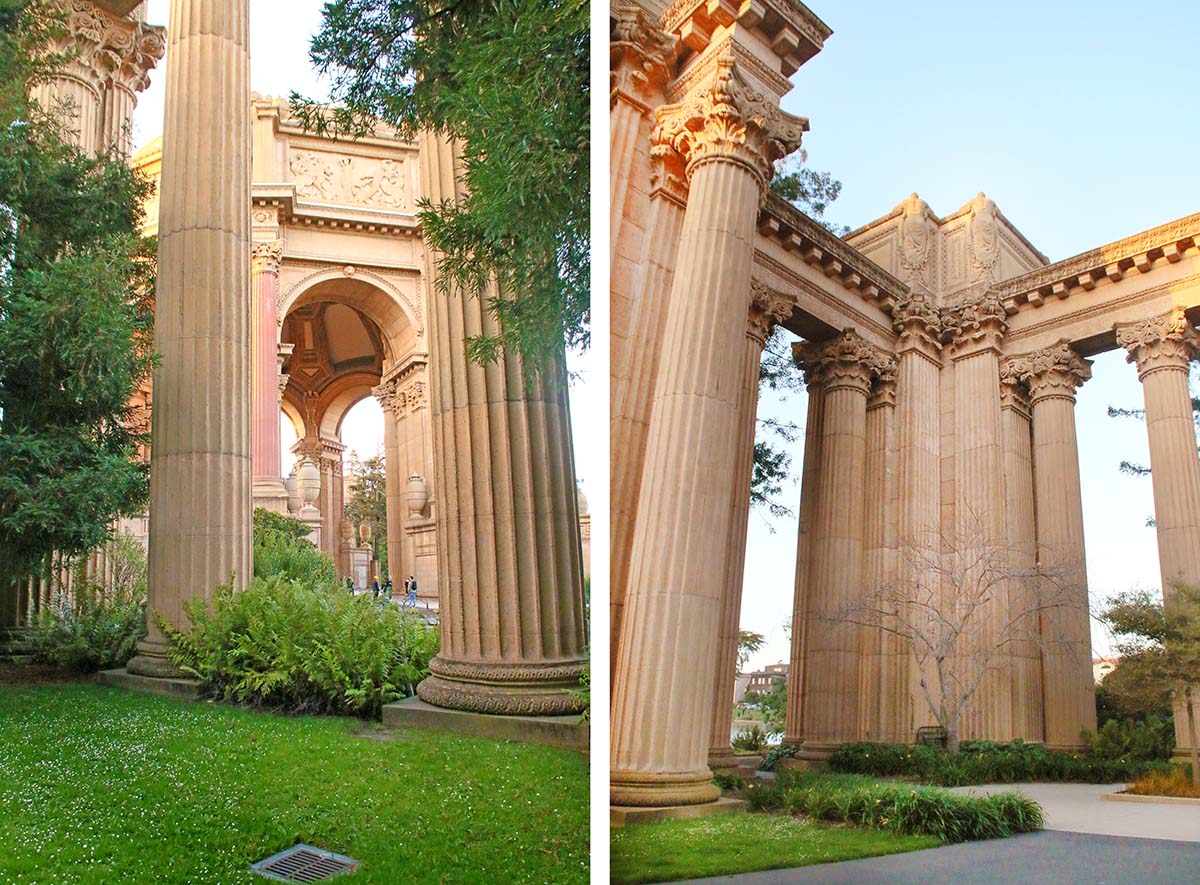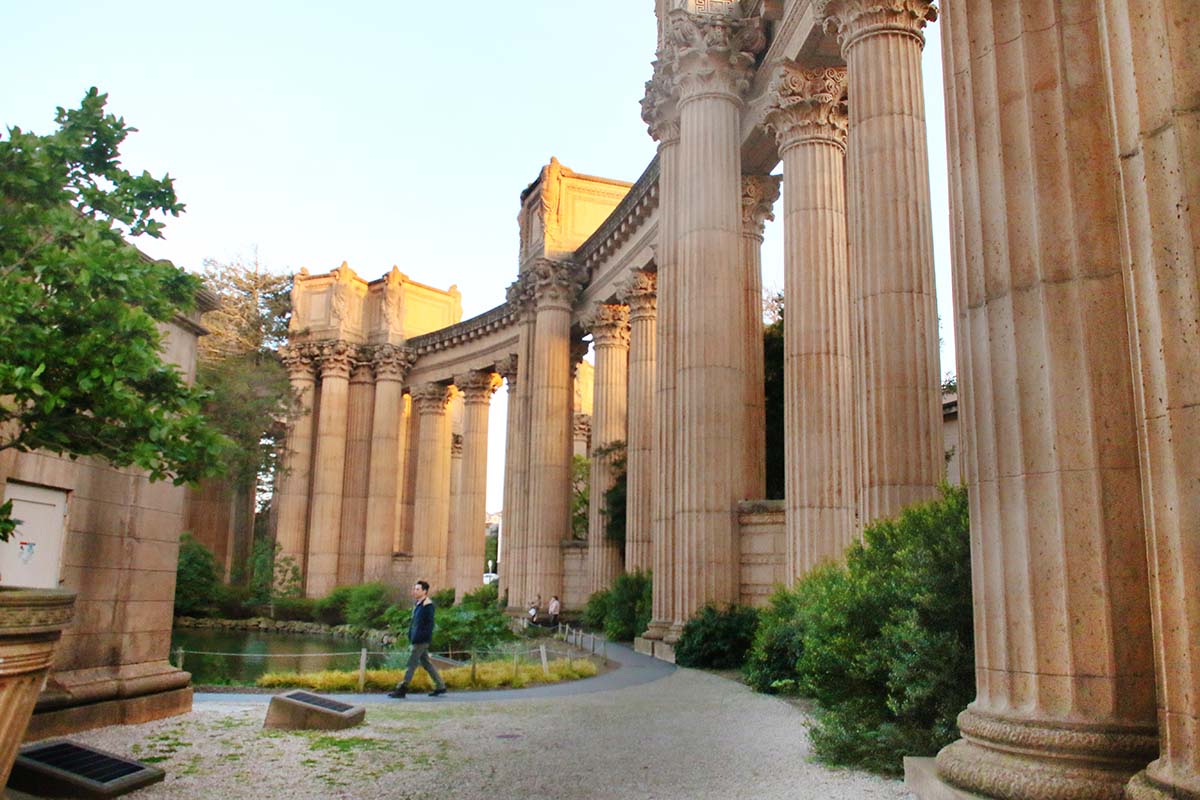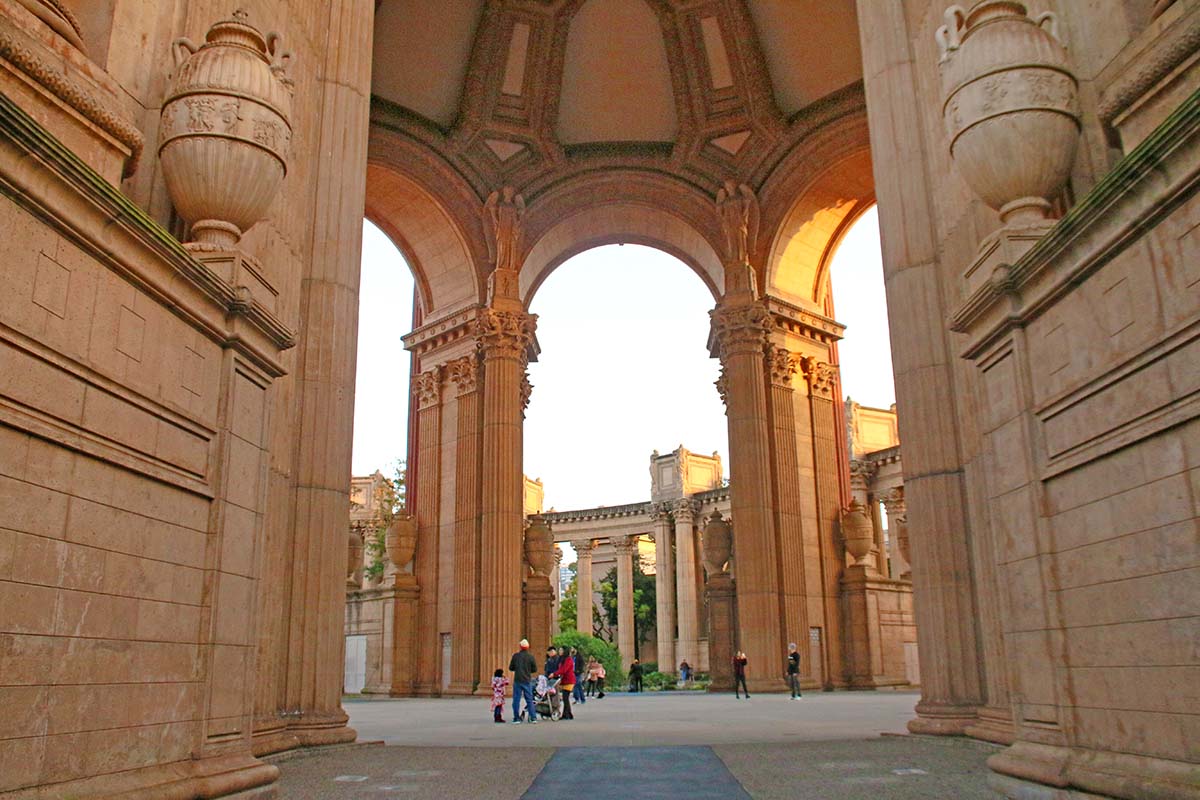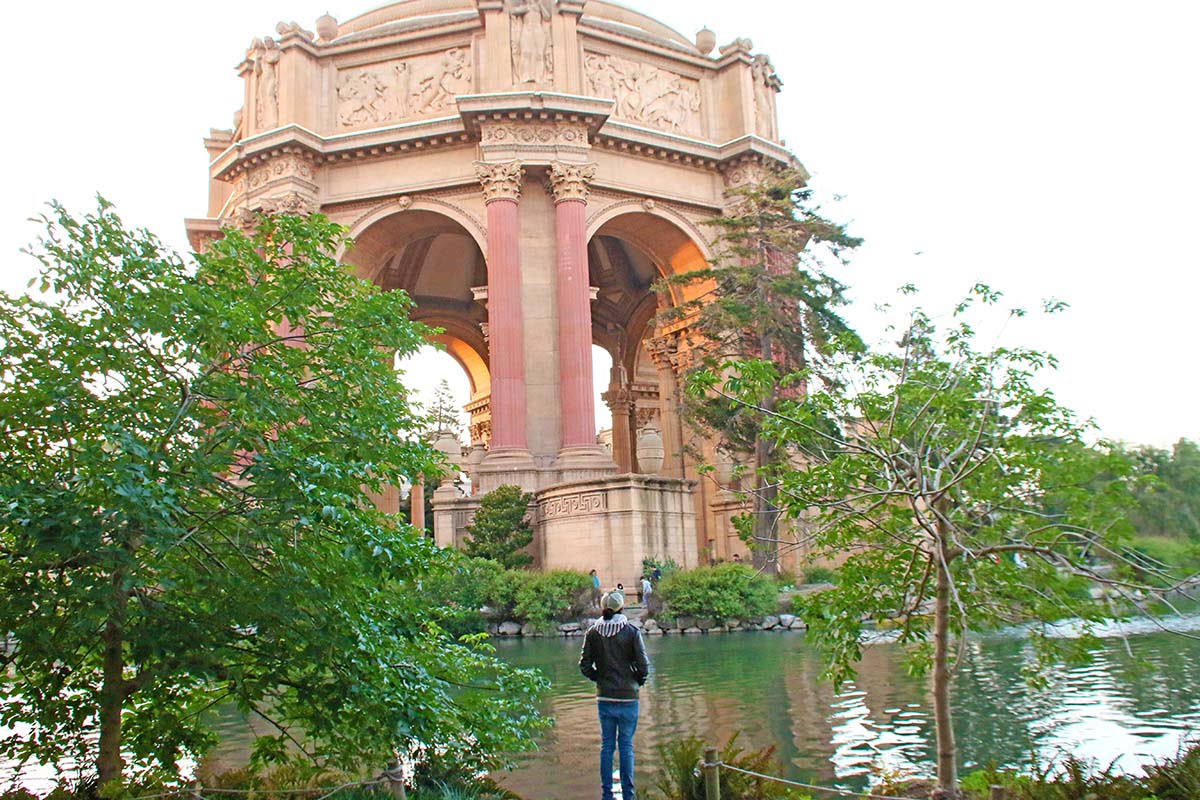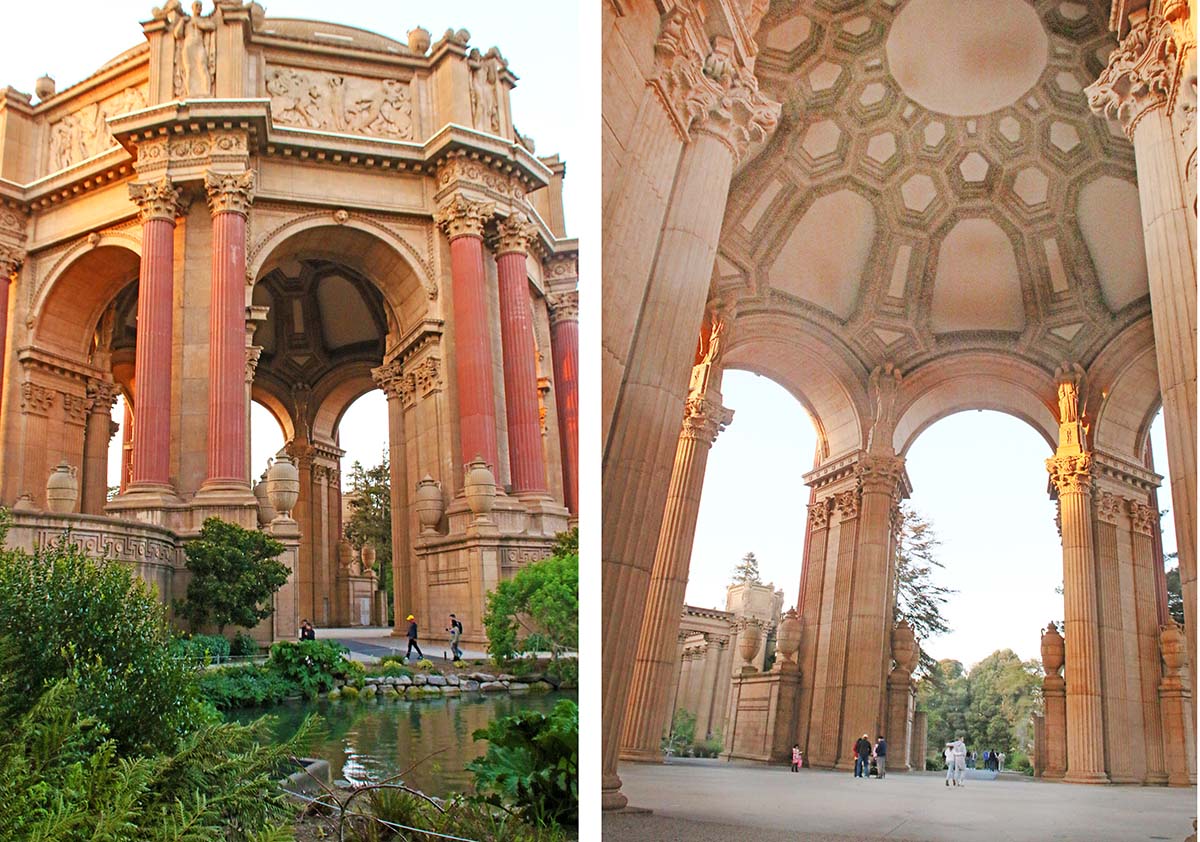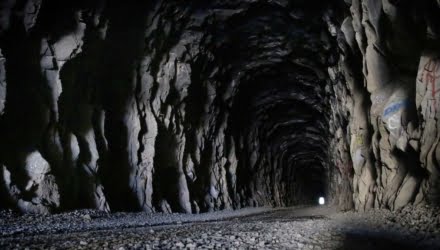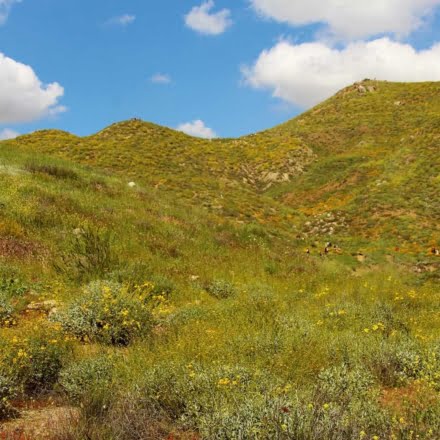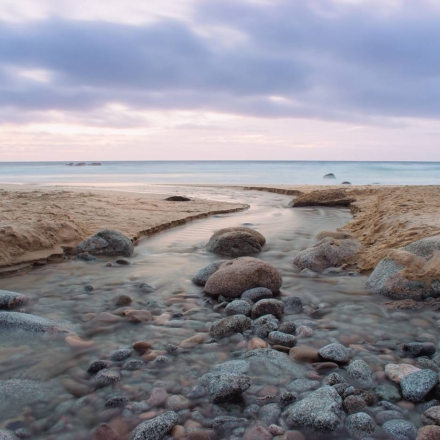Hello everyone! This is a friendly reminder that any of these fun places we may visit, we are a guest at. Please treat both businesses and trails with the utmost respect. We here at Hidden California follow the 'Leave no Trace' mantra, meaning whatever you bring with you comes back with you. If you see trash on a trail, please do your part to help remove it. Remember, we are not picking up trash from another person but instead cleaning up for Mother Nature. Happy adventures!
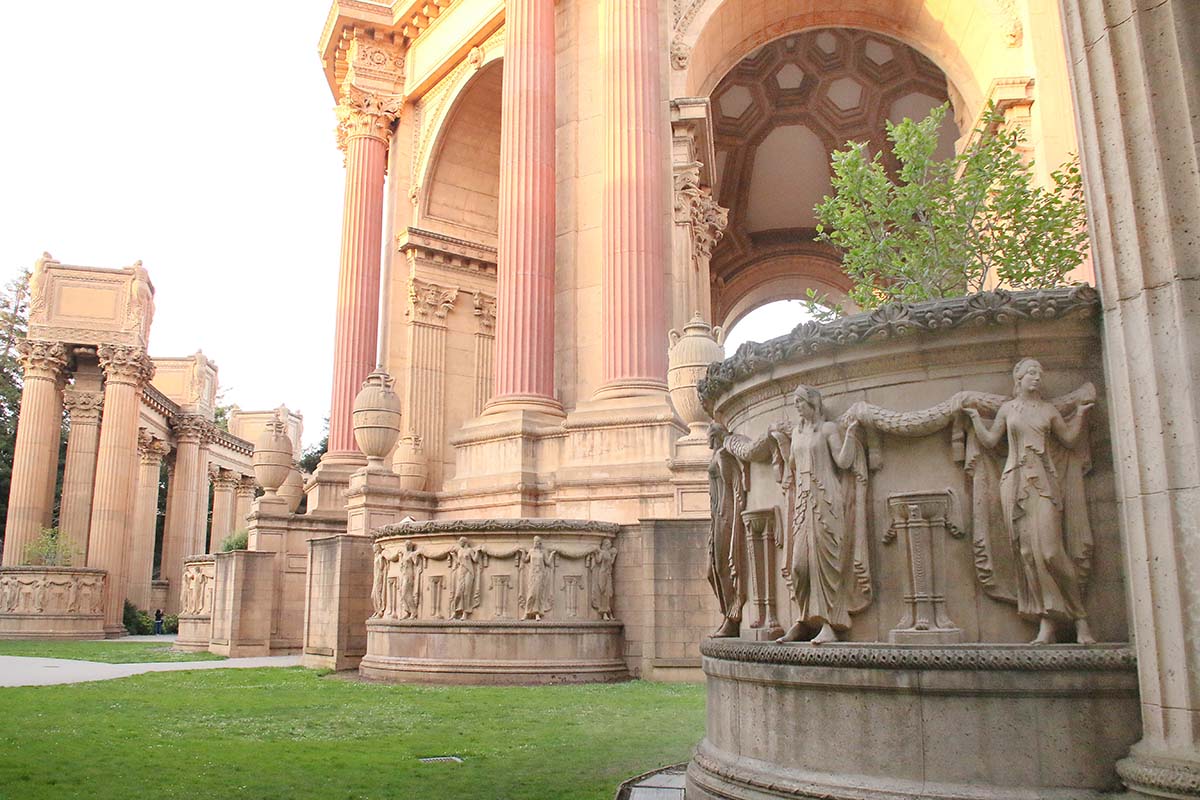
3601 Lyon St, San Francisco, CA 94123
37.8031511230, -122.44834797
415-376-1704
Dog-Friendly: On leash, yes Kid-Friendly: Yes
Hours: Sun-Tues-10am-5pm // Mon- Closed
About the Palace of Fine Arts
The Palace of Fine Arts is an historical monument that was built in 1915 for Panama-Pacific Exposition in San Francisco. Balboa Park in San Diego was also built for the same traveling exposition. The Palace of Fine Arts is the only structure from the Exposition in SF that survives on site.
Conceived to evoke a decaying ruin of ancient Rome, the Palace of Fine Arts became one of San Francisco’s most recognizable landmarks. This was originally one of 10 palaces built for the exhibition. The others included were the Palaces of Education, Liberal Arts, Manufactures, Varied Industries, Agriculture, Food Products, Transportation, Mines and Metallurgy and the Palace of Machinery.
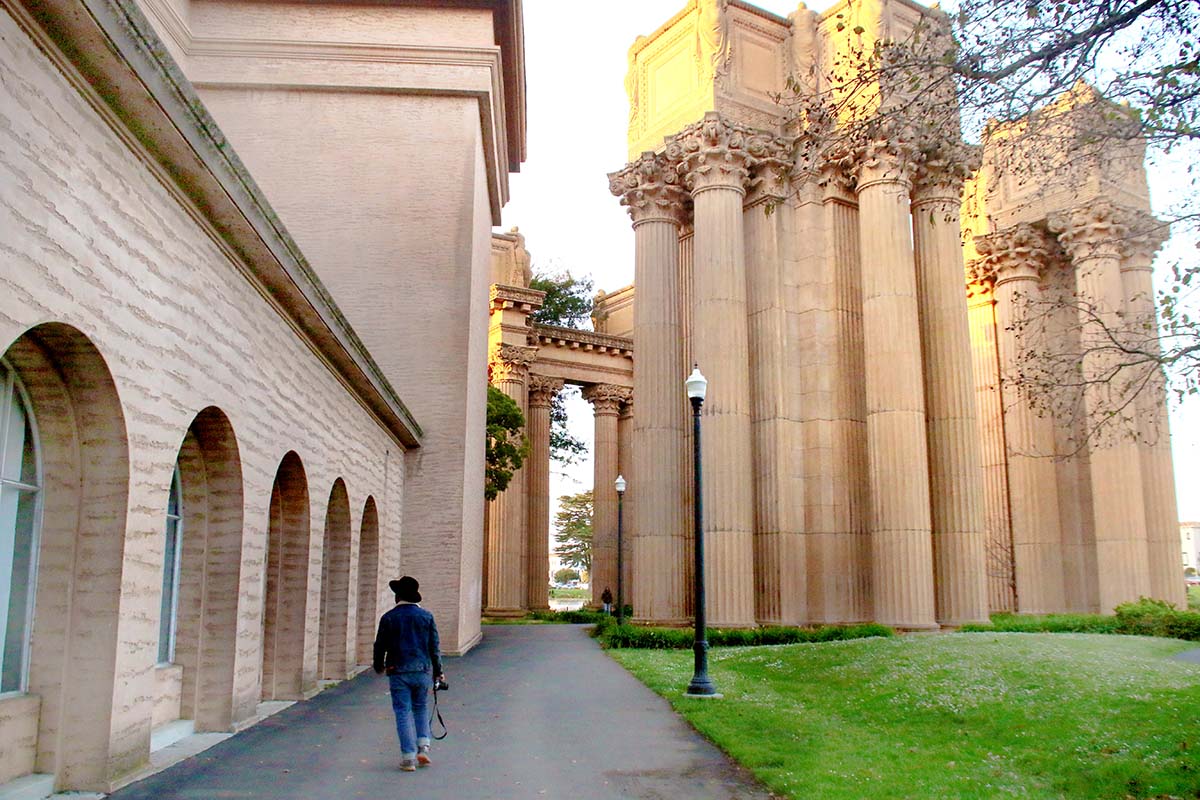
The Palace of Fine Arts was designed as a quiet zone, where exhibition attendees could pass through between visiting the crowded fairgrounds and viewing the paintings and sculptures displayed in the building behind the rotunda. While most of the exposition was demolished when the exposition ended, the Palace was so beloved that a Palace Preservation League, founded by Phoebe Apperson Hearst, was founded while the fair was still in progress.
While the Palace had been saved from demolition, its structure was not stable. Originally intended to only stand for the duration of the Exhibition, the colonnade and rotunda were not built of durable materials, and thus framed in wood and then covered with staff, a mixture of plaster and burlap-type fiber. As a result of the construction and vandalism, by the 1950s the simulated ruin was in fact a crumbling ruin.

While you’re in the area, make sure to check out the Wave Organ nearby!
Built around a small artificial lagoon, the Palace of Fine Arts is composed of a wide pergola around a central rotunda situated by the water. The lagoon was intended to mimic those found in classical settings in Europe, where the expanse of water provides a mirror surface to reflect the grand buildings and an undisturbed vista to appreciate them from a distance.
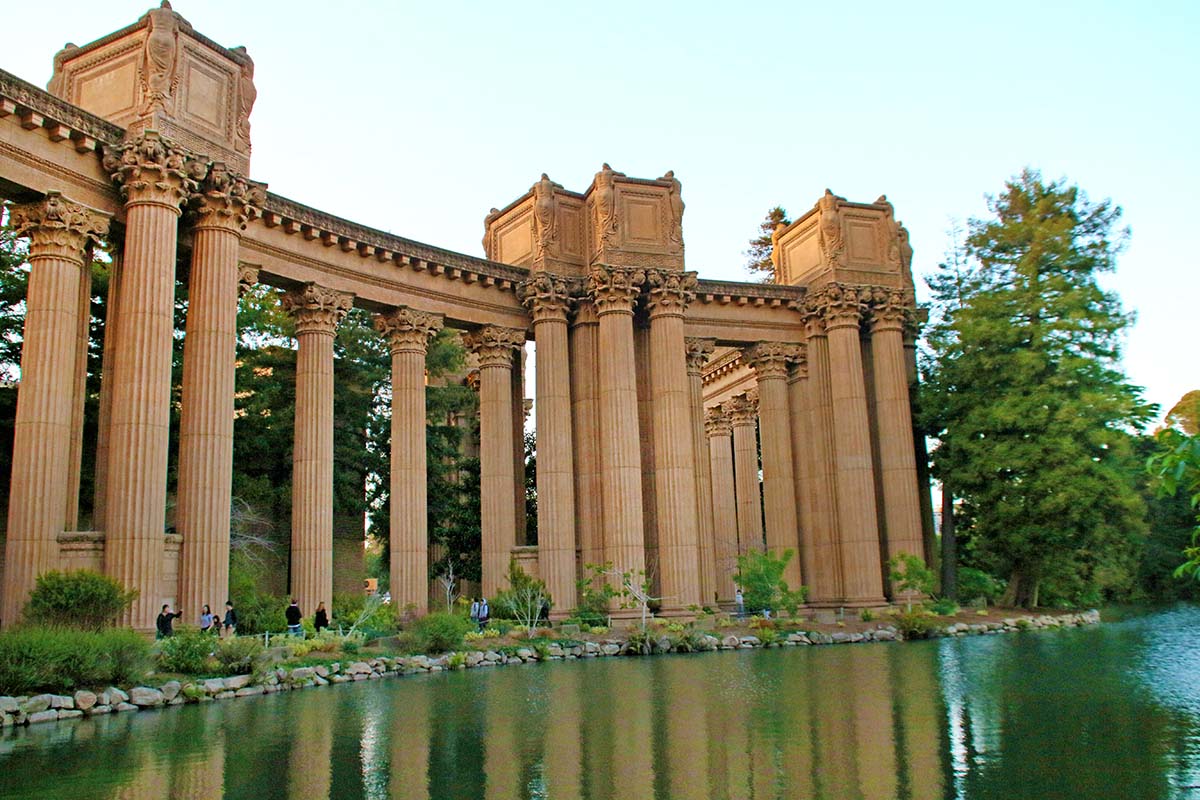 The most prominent building of the complex, a 162 feet open rotunda, is enclosed by a lagoon on one side, and is neighboring a large, curved exhibition center on the other side, which is separated from the lagoon by colonnades. Many forms of wildlife live here including swans, ducks, geese, turtles, frogs, and raccoons.
The most prominent building of the complex, a 162 feet open rotunda, is enclosed by a lagoon on one side, and is neighboring a large, curved exhibition center on the other side, which is separated from the lagoon by colonnades. Many forms of wildlife live here including swans, ducks, geese, turtles, frogs, and raccoons.
The Palace of Fine Arts has been seen in films such as Vertigo (1958), Time After Time (1979), Bicentennial Man (1999),The Room (2003), and Twisted (2004). It also served as the backdrop for set pieces in So I Married An Axe Murderer (1993) and The Rock (1996). It also appears in Season 7, Episode 2 of Mission: Impossible, and in Season 8, Episode 7 of Mannix. It was incorporated into the imagery of the Sept of Baelor in Season 1, Episode 9 of Game of Thrones.
The structure was also featured as a landmark in the 2003 video game SimCity 4. In the 2000s, a smaller replica of the rotunda of the Palace of Fine Arts was built in Disney’s California Adventure in Anaheim, serving as the entrance to a theater showing the film Golden Dreams about the history of California.
